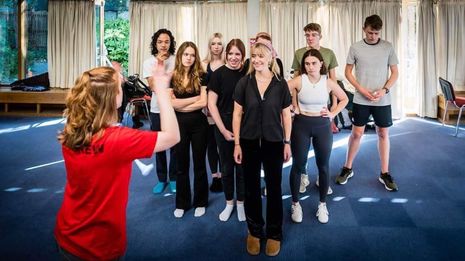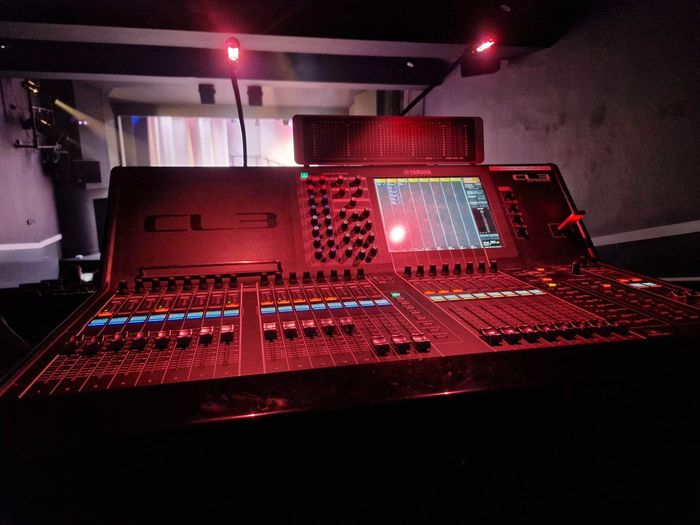Facing the music: the world of choreographers
Emily Sparkes looks behind the curtain to investigate the challenging process behind bringing dance to the stage

Kiss Me Kate, the annual CUMTS Gala, Spring Awakening, Chess. All have dazzled ADC audiences over the last year with their immense, detailed, and expertly sharp dance routines. I sat down with Gina Stock, Hannah Filer and Grace Beckett, some of the most prominent choreographers in Cambridge theatre, to find out about the people behind the breathtaking routines that take the ADC stage by storm.
I wondered how much time goes into choreographing routines before they get taught to cast members. I quickly realised that the answer was more complicated than a number of hours. All three choreographers’ experiences with dance started when they were younger and directly affect the way they create and teach now. Grace and Gina both grew up in the competitive dance world: Grace in Disco Freestyle, Latin and Ballroom; Gina in a whole host of styles. The mix of dance training both have had makes their routines incredibly unique. They become an amalgamation of the styles they trained in and their own constantly developing styles.
“I like to say I have bugger-all dance training!”
Surprisingly, when I asked Hannah about her dance background, she replied: “I like to say I have bugger-all dance training!” Having worked with Hannah and seen her amazing choreography on stage before, I was taken aback. She explained: “it’s so weird, in the dance world, what is considered the minimum amount of training you need to be deemed ‘a dancer’, and I don’t have that!” Hannah danced outside of school until she was 11, before moving to classes in the school curriculum. Behind Hannah, Grace, and Gina are both years of training and a deep love for choreography and dance itself. From the first seconds of each interview, enthusiasm radiated out of each of the women. It was clear to me from the outset that these choreographers love what they do.
With a better understanding of the years of passion-driven work behind each of these dancers, I felt more confident to ask what goes into creating choreography. Compared to choreographing the annual CUMTS Gala, “everything changed” when Grace choreographed Spring Awakening. It took her three weeks of consistent work, compared to the usual “day” spent on Gala routines. She shared how for some numbers, choreography “just came to me,” something which I can attest to from my own choreography practice. When those flashes of inspiration don’t come immediately, Grace’s process begins with listening to the song on repeat and researching other productions of the show, seeing how other people have worked with the music. She decides what styles she likes, and sees if there’s anything she wants to avoid.
“These choreographers have thought out every little detail weeks in advance”
Gina also emphasised the importance of seeing how other choreographers have done numbers. She finds the best choreography comes as a mashup of her own old routines, new moves she’s picked up from going to classes, and moments from other people’s work – “incorporating it into your own work the same way an artist or a painter would.” Grace has endless notebooks of choreography written down in her very own shorthand whilst Gina records and writes down her routines, especially when she’s choreographing for larger groups. She explained: “I’ll draw one formation, either with peoples’ initials or blobs, then the next, and draw arrows to figure out how they get from one to the next.”
For Hannah, context is everything when she choreographs. She explains:“it’s normally me improvising, but it’s not as simple as that.” Before she starts improvising, she considers the music, the tempo, the director’s vision, the functional purpose of the number, the cast’s skill set, and the demands on the cast vocally during that number. There is no such thing as haphazardly throwing together dance moves. These choreographers have thought out every little detail weeks in advance. “My first thought is always make the choreography fit the vibe of the show, not fitting the vibe to the choreography.”
Gina finds the process of choreographing time-consuming. “I spent a long time choreographing Kiss Me Kate, to the extent that if we calculated the hours I might have a breakdown! For Chess, I snuck into my local dance studio over the summer, and spent hours on it. People don’t understand how much time goes into it, you don’t just turn up with a little dance and a sing-song, if you want to create something you’re really proud of it takes time.”
The process of choreography is clearly highly demanding. It takes hours of time finding space to dance, blocking out chunks of days for work, and the physical effort of actually dancing. It even consumes a massive amount of the choreographer’s headspace. My conversations with Gina, Hannah and Grace emphasised to me a love for dance. More than anything else, these women have a joy they want to share with others through their choreography.
 Comment / Cambridge students are too opinionated 21 April 2025
Comment / Cambridge students are too opinionated 21 April 2025 News / Candidates clash over Chancellorship25 April 2025
News / Candidates clash over Chancellorship25 April 2025 News / Cambridge professor paid over $1 million for FBI intel since 199125 April 2025
News / Cambridge professor paid over $1 million for FBI intel since 199125 April 2025 News / Zero students expelled for sexual misconduct in 2024 25 April 2025
News / Zero students expelled for sexual misconduct in 2024 25 April 2025 Comment / Does the AI revolution render coursework obsolete?23 April 2025
Comment / Does the AI revolution render coursework obsolete?23 April 2025






